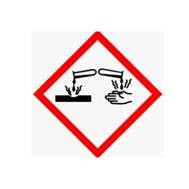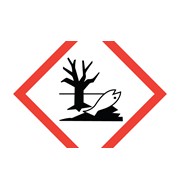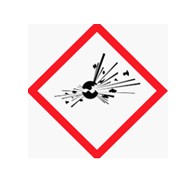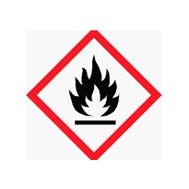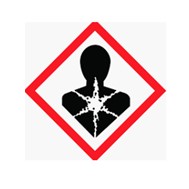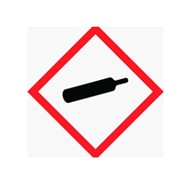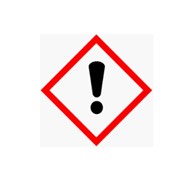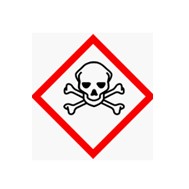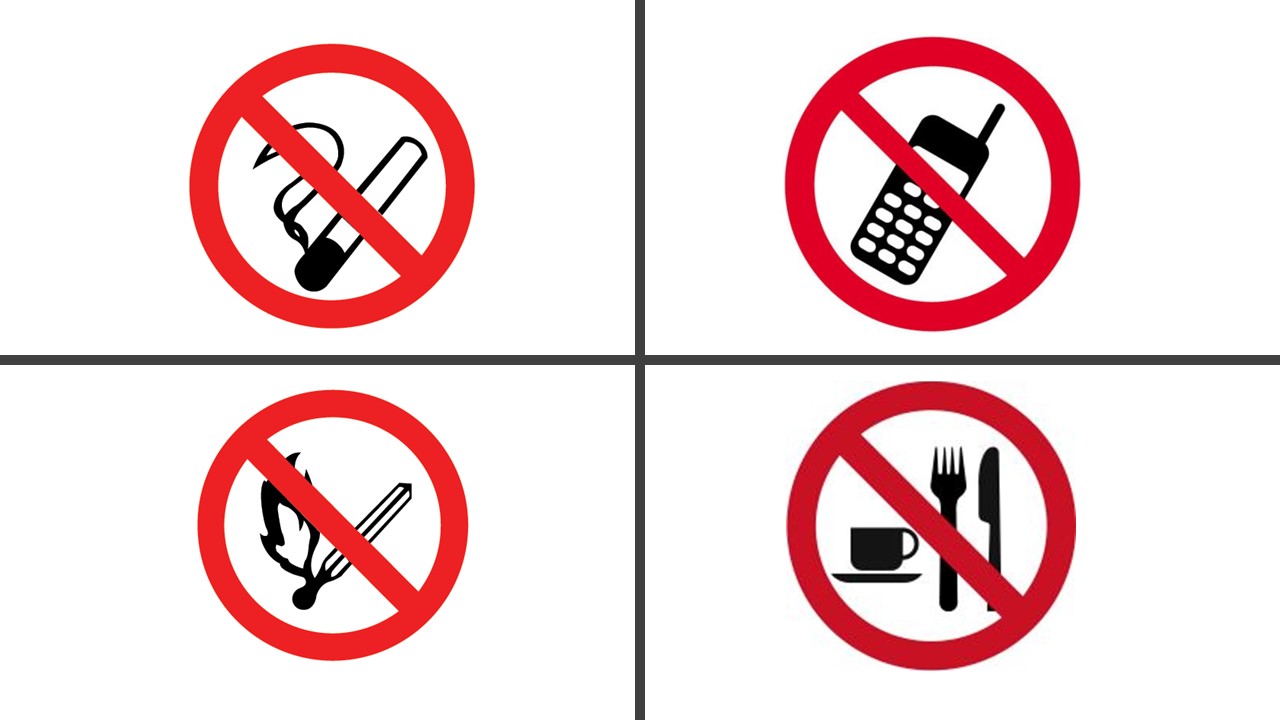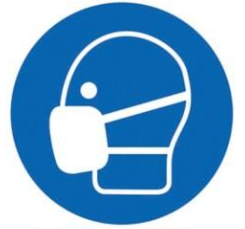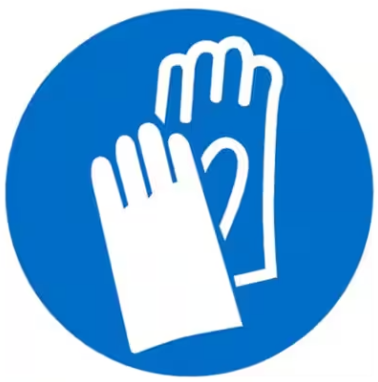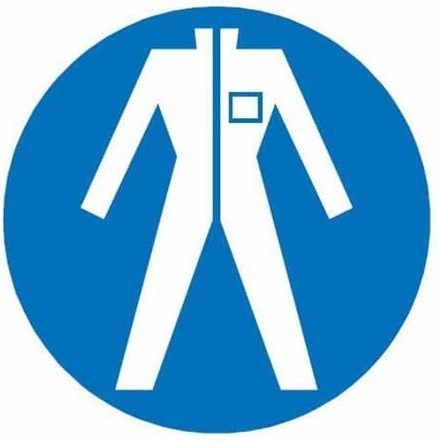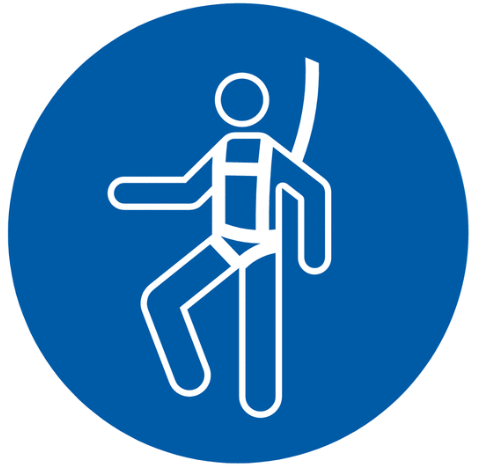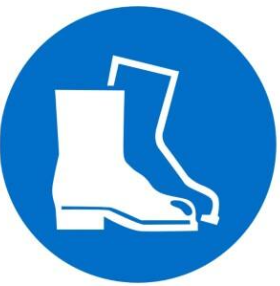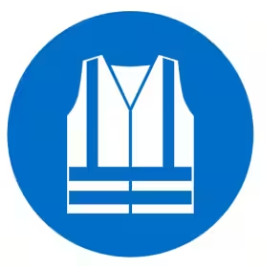Title Page
-
Site conducted
-
Ref No.
-
Date of assessment
-
Task Name:
-
Add details of the task here - for example, a video of the operation, Operational process (in a .pdf format)
Chemical Name (s)
-
Are Safety Data Sheets available in the asset?
-
You should not proceed without a current safety data sheet. Please source and add the .pdf document to the Asset
-
Issue number
-
Purpose of new issue
- general review (2 years since last review)
- Due to an accident
- Due to change in process
- Risk assessment no longer suitable
-
Add detailed description of review
-
Prepared by
-
Procedure (How are you going to use this product)
Chemical Information
-
Hazard ID
- Corrosive
- Environmental Hazard
- Explosive
- Flammable
- Compressed Gas
- Health Hazard
- Caution/Danger
- Oxidiser
- Toxic
- No Hazards Applicable
-
Corrosive to metals and can cause severe skin burns and eye damage.
-
Toxic to aquatic life with lasting effects
-
Explosives may explode in fire/heat together with risk of projectiles.
-
Flammable gasses, aerosols, liquid, vapours and solids.
-
Severe Health hazards and may cause repiratory issues, dizziness and skin/reactions. Can be harmful if swallowed/inhaled or contact with skin.
-
Compressed gasses may explode if heated with projectile/fire risk. Refrigerated gasses may cause cold burns/injuries.
-
Health hazards and may cause repiratory issues, dizziness and skin/reactions. Can be harmful if swallowed/inhaled or contact with skin.
-
Toxic/Fatal if swallowed, inhaled and contact with skin
-
Oxiders may cause or intensify fire and can explode.
H Codes
-
H codes (Physical Hazards)
- No physical hazard associated with this chemical
- H200: Unstable explosive
- H201: Explosive; mass explosion hazard
- H202: Explosive; severe projection hazard
- H203: Explosive; fire, blast or projection hazard
- H204: Fire or projection hazard
- H205: May mass explode in fire
- H206: Fire, blast or projection hazard; increased risk of explosion if desensitizing agent is reduced
- H207: Fire or projection hazard; increased risk of explosion if desensitizing agent is reduced
- H208: Fire hazard; increased risk of explosion if desensitizing agent is reduced
- H220: Extremely flammable gas
- H221: Flammable gas
- H222: Extremely flammable material
- H223: Flammable material
- H224: Extremely flammable liquid and vapour
- H225: Highly flammable liquid and vapour
- H226: Flammable liquid and vapour
- H227: Combustible liquid
- H228: Flammable solid
- H229: Pressurized container: May burst if heated
- H230: May react explosively even in the absence of air
- H231: May react explosively even in the absence of air at elevated pressure and/or temperature
- H232: May ignite spontaneously if exposed to air
- H240: Heating may cause an explosion
- H241: Heating may cause a fire or explosion
- H242: Heating may cause a fire
- H250: Catches fire spontaneously if exposed to air
- H251: Self-heating; may catch fire
- H252: Self-heating in large quantities; may catch fire
- H260: In contact with water releases flammable gases which may ignite spontaneously
- H261: In contact with water releases flammable gas
- H270: May cause or intensify fire; oxidizer
- H271: May cause fire or explosion; strong oxidizer
- H272: May intensify fire; oxidizer
- H280: Contains gas under pressure; may explode if heated
- H281: Contains refrigerated gas; may cause cryogenic burns or injury
- H290: May be corrosive to metals
-
H Codes (Health Hazards)
- No health hazards apply to this chemical
- H300: Fatal if swallowed
- H301: Toxic if swallowed
- H302: Harmful if swallowed
- H303: May be harmful if swallowed
- H304: May be fatla if swallowed and enters airways
- H305: May be harmful if swallowed and enters airways
- H310: Fatal in contact with skin
- H311: Toxic in contact with skin
- H312: Harmful in contact with skin
- H313: May be harmful in contact with skin
- H314: Causes severe skin burns and eye damage
- H315: Causes skin irritation
- H316: Causes mild skin irritation
- H317: May cause an allergic skin reaction
- H318: Causes serious eye damage
- H319: Causes serious eye irritation
- H320: Causes eye irritation
- H330: Fatal if inhaled
- H331: Toxic if inhaled
- H332: Harmful if inhaled
- H333: May be harmful if inhaled.
- H334: May cause allergy or asthma symptoms or breathing difficulties if inhaled.
- H335: May cause respiratory irritation
- H336: May cause drowsiness or dizziness
- H340: May cause genetic defects
- H341: Suspected of causing genetic defects
- H350: May cause cancer
- H351: Suspected of causing cancer
- H360: May damage fertility or unborn child
- H361: Suspected of damaging fertility or the unborn child
- H361d: Suspected of damaging the unborn child
- H362: May cause harm to breast-fed children
- H370: Causes damage to organs
- H371: May cause damage to organs
- H372: Causes damage to organs through prolonged or repeated exposure
- H373: May cause damage to organs through prolonged or repeated exposure
-
H Codes (Environmental Hazards)
- No Environmental hazards apply to this chemical
- H400: Very toxic to aquatic life
- H401: Toxic to aquatic life
- H402: Harmful to aquatic life
- H410: Very toxic to aquatic lift with long lasting effects
- H411: Toxic to aquatic life with long lasting effects
- H412: Harmful to aquatic life with long lasting effects
- H413: May cause long lasting harmful effects to aquatic life
- H420: Harms public health and the environment by destroying ozone in the upper atmosphere
- H441: Very toxic to terrestrial invertebrates
-
European Union Supplementary Hazard Statements List
- No European Union Supplementary Hazard Statements
- EUH001 Explosive when dry
- EUH006 Explosive with or without contact with air
- EUH014 Reacts violently with water
- EUH018 In use, may form flammable/explosive vapour-air mixture
- EUH019 May form explosive peroxides
- EUH044 Risk of explosion if heated under confinement
- EUH029 Contact with water liberates toxic gas
- EUH031 Contact with acids liberates toxic gas
- EUH032 Contact with acids liberates very toxic gas
- EUH066 Repeated exposure may cause skin dryness or cracking
- EUH070 Toxic by eye contact
- EUH071 Corrosive to the respiratory tract
- EUH059 Hazardous to the ozone layer
- EUH201 Contains lead. Should not be used on surfaces liable to be chewed or sucked by children
- EUH201A Warning! Contains lead
- EUH202 Cyanoacrylate. Danger. Bonds skin and eyes in seconds. Keep out of the reach of children
- EUH203 Contains chromium (VI). May produce an allergic reaction
- EUH204 Contains isocyanates. May produce an allergic reaction
- EUH205 Contains epoxy constituents. May produce an allergic reaction
- EUH206 Warning! Do not use together with other products. May release dangerous gases (chlorine)
- EUH207 Warning! Contains cadmium. Dangerous fumes are formed during use. See information supplied by the manufacturer. Comply with the safety instructions
- EUH208: Contains (name of sensitising substance). May produce an allergic reaction
- EUH209: Can become highly flammable in use
- EUH209A: Can become flammable in use
- EUH210: Safety data sheet available on request
- EUH401: To avoid risks to human health and the environment, comply with the instructions for use
Control Measures:
-
General - For your safety and the safety of others, whilst using/applying/mixing this chemical "No Naked Flames, Smoking, Food/Drink and Mobile Phones"
-
Basic Personal Protective Equipment (PPE) must be worn in accordance with local site rules.
-
What PPE is required for this task?
- Hearing Protection
- Eye Protection
- Respiratoty Protection
- Hand Protection
- Head Protection
- Fall from Height protection
- Protective Clothing/ Coveralls
- Foot Protection
- Hi Visibility Clothing
- Other
-
-
Specify Hearing Protection Type/ Grade
- EN352 Disposable ear plugs
- EN352 Reusable ear plugs
- EN352 Over ear defenders
- EN352 Communication Ear defenders
-
Task / Hazard Controlled
-
-
Specify Eye Protection Type/ Grade
-
Task / Hazard Controlled
-
-
Specify Respiratory Protection Type/ Grade
- EN136 - face/dust mask
- EN136 - respirator - face fit required
- self contained breathing apparatus - training required
-
Task / Hazard Controlled
-
-
Specify Hand Protection Type/ Grade
- EN388 Puncture resistant
- EN388 Cut resistant
- EN388 Impact resistant
- EN388 Abrasion resistant
- EN374 Chemical resistant
- EN407 Thermal (heat) resistant
- EN511 Thermal (cold) resistant
- EN388 Vibration resistant
-
Task / Hazard Controlled
-
-
Specify Protective coveralls/ clothing Type/ Grade
-
Task / Hazard Controlled
-
-
Specify Head protection type
-
Task/ Hazard controlled
-
-
Type/ grade of fall arrest equipment
-
Hazard/ Task controlled
-
-
Type/ grade of foot protection
-
Task/ hazard Controlled
-
What other PPE type is required? (include grade and style)
-
Task/ Hazard Controlled
-
-
Specify Type/Grade
- EN471,2 Hi Vis Vest front fastening
-
Task / Hazard Controlled
First Aid
-
Skin Contact
- Wash skin thoroughly with soap/water.
- Dry clean skin with waterless cleaner before washing with soap/water.
- If problems arise/persist, seek medical assistance.
-
Ingestion
- Rinse Mouth
- Induce vomiting
- DO NOT Induce vomiting
- Keep head low to prevent vomit entering lungs/airways.
- Keep patient calm/still
- Observe patient for remainder of day, do not leave unattended.
- Seek immediate medical assistance.
- Take patient to fresh air.
- Loosen tight clothing including ties/belts
- Allow a quantity of drinking water.
-
Allow a volume of water to drink
- Upto 100ml
- Upto 500ml
- No limits
-
Inhalation
- Remove into fresh air
- If respiratory irritation occurs, seek medical assistance
- Seek immediate medical assistance.
- Keep warm and rest.
- Do not give patient anything orally.
- Place in recovery position and wait for medical assistance.
- If breathing stops, apply mouth-to-mouth/assisted mechanical ventilation.
-
If mouth-to-mouth is required ensure this is safe to do so, First Aider to be mindful of being affected themselves of the chemical product effecting the patient.
-
Eyes
- Check for/Remove contact lenses
- Flush thoroughly with clean water for at least 15minutes Hold eyelids open occasionally (ensure clean hands).
- If irritation/vision issues occurs, seek medical assistance.
Fire Fighting
-
DO NOT ATTEMPT TO TACKLE A FIRE UNLESS TRAINED TO DO SO
-
Fire Fighting Media
- H20 (Water)
- Powder
- CO2 (Carbon Dioxide)
- Foam
-
Fire fighting considerations.
- Evacuate area
- Raise building alarms and evacuate facility
- Toxic fumes maybe produced.
- Smoke will effect visibility
- Dangerous by products maybe produced, e.g. acid from batteries!
- Risk of Explosion
- Keep upwind
- When extinguished, keep cool to prevent risk of re-ignition.
- Be aware of other chemicals and characteristics in affected area.
- Contact Emergency, Fire and Rescue (Fire Brigade)
- Prevent fire extinguisher run off entering drains/water courses.
Environmental Precautions
-
Product should be stored and used in a manner with considerations that prevent the accidental release into drains and sewerage system together with other water courses, soaked into land and confined area. Be aware of vapours drifting into occupied and populated areas (on or off site).
General:
-
What is the storage requirements?
- Above a specific temperature (Degrees)
- Not exceeding a specific temperature. (Degrees)
- In well ventilated area.
- In own packaging
-
Enter maximum allowed storage temperature (Degrees).
-
Is there adequate storage location for this material?
-
What temperature should this material be stored at?
-
Is an adequate temperature controlled area available?
Clean up Procedures / Accidental Release Measures:
-
Environmental Spill Drills should be performed at least every 6 months and documented on Emergency Procedure Drill form.
-
Clean up Procedures / Accidental Release Measures:
- Contain spillage using booms/socks
- Absorb spillage with non-combustible material (Provided in spill kits)
- If safe to do so, stop leak
- Use specific spill kit tools only and equipment, that don't spark
- Allow product to solidify, then remove.
- Label containers used to hold cleaned up spill material/media (Contact waste management company for suitable disposal).
- Use detergents to clean up remnants of spill. (Additional COSHH assessment required for this action)
- Consult with a clean up specialist.
-
Clothing/Work wear.
- Launder/Clean contaminated articles separately before re-use.
- Discard contaminated articles (In accordance with QSHE SOP 016 Waste Management)
Risk Evaluation.
-
Application Method
- With a brush/Mop
- Decanting using funnel/Manual pump
- Applying with cloth/Mixing
- Pump action Sprayer
- Via a pressurised gas canister/aerosol
- Other
-
Please specify application method
-
Amount used
-
Exposure Time (Frequency)
-
Exposure Time
-
Who is Exposed
- Operators/Contractors
- Colleagues
- Operators/Colleagues/Contractors
- Visitors
- General Public
-
Using the score from the risk evaluation, enter the appropriate "Task Hazard Level"
-
Task Hazard Level
Sign Off
-
Assessor's Name and Signature






